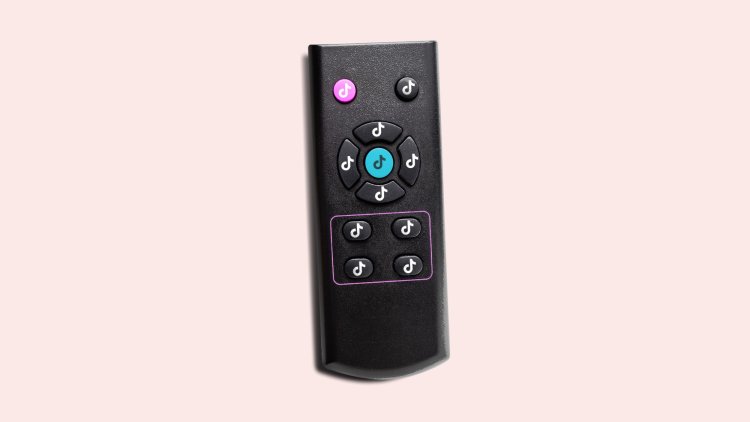You’re Looking at TikTok All Wrong
The app is basically just broadcast TV now.

When the Universal Music Group decided to pull its songs from TikTok last month in the midst of a protracted rights dispute, some called the move the “nuclear option.” UMG handles major artists including Taylor Swift and Bad Bunny, and isn’t music the lifeblood of the social app? Billboard has a separate chart for the most popular songs on TikTok; artists such as Lil Nas X effectively owe their career to the platform. Surely this would mark the end of TikTok as we know it, right?
Well, not so fast. TikTok has grown into a titanic content machine with a sprawling user base; the platform has good reason to believe that it doesn’t need UMG’s catalog for the gears to turn. As creators were quick to point out following an embarrassing congressional hearing with TikTok CEO Shou Zi Chew last year, during which politicians betrayed a deep unfamiliarity with the app, the stereotype that TikTok is for dancing, lip-synching teens is long out of date. The TikTok of today is more like a cable-TV giant or a streaming service crushed into an endlessly scrolling feed.
Culturally, the platform has been trending more toward the mainstream for quite some time now. But this shift has become even more pronounced during the fight between the company and the world’s biggest music label. TikTok and Universal Music Group have been in the process of renegotiating their expired rights contract, which allowed TikTok to license UMG’s songs for use in videos. As talks dragged on, TikTok first silenced the songs—meaning they wouldn’t play in existing TikTok videos and couldn’t be used for new ones—and now has begun the process of deleting the UMG library entirely.
[Read: TikTok killed the video star]
As a result, the app has been functionally UMG-music-free for a month already, and its feeds haven’t felt remarkably different. TikTok does not release real-time usage stats, but representatives for data.ai and Sensor Tower, two independent data-analytics companies, both told me that they had not seen an appreciable drop in usage since the songs first went silent at the beginning of February. TikTok still offers users a familiar, steady stream of viral home videos, reruns of old clips from TV shows and movies, and late-night segments featuring celebrity interviews.
At its core, TikTok is a place where a lot of people gather to watch the same thing. Today, roughly a third of adults in the United States say they use TikTok, according to recent polling from the Pew Research Center. Younger people are still more likely than older people to be on the platform, but nearly 40 percent of people ages 30 to 49 use TikTok, as well as almost a quarter of those ages 50 to 64. And a significant portion of TikTok’s user base is just there to watch. About half of adult TikTok users, Pew found in a separate survey, have never posted, and the typical user doesn’t put anything in their bio. For a social network, this is pretty antisocial behavior.
Of course, one major difference between TikTok and traditional broadcasting is that the app has largely ceded control of its lineup to an algorithm. TikTok’s algorithm is often credited with pairing people and niche videos with scary accuracy. Sometimes it may indeed do this. But in many cases, the app’s algorithm is just looking for signals that a user enjoys a given video, and uses those insights to blast it out to more people. “Algorithms reinforce the tendency for popular things to get more popular,” Kevin Munger, a professor at Penn State University who has studied TikTok’s algorithm, told me last year.
[Read: Please get me out of dead-dog TikTok]
The algorithm ends up being a centralizing force; although the viewing options on TikTok can feel limitless, the reality is that you are being fed content from a small pool of creators relative to the app’s overall size. Another Pew study released last week found that 25 percent of adult TikTok users produce 98 percent of that age group’s content. Similarly, a report from Pex, a company that uses AI to track and identify content on platforms for clients (including copyright holders hoping to monitor the use of their songs), found that just 5 percent of videos generate 89 percent of the overall views on TikTok. (TikTok did not immediately respond to a request for comment about the findings from this research.) A similar dynamic plays out on YouTube, where less than 4 percent of uploads account for almost all of the traffic on the site. Perhaps it’s technically true that anyone can go viral on TikTok, but only in the same way that anyone can audition for American Idol. The reality is that most people don’t make it.
The bigger TikTok gets, the more the algorithm seems to pick up on the preferences of mainstream viewers. Broadcast TV is dominated by sports, and so is TikTok. The same report by Pex found that the top three TikTok channels in 2023 were sports accounts: Barstool Sports, ESPN, and House of Highlights. This is the law of large numbers in action; the more people join the app, the more its offerings start to feel a bit … normcore.
Yet TikTok doesn’t just reflect popular tastes. It fully absorbs them into an engine that no one has a clear view into. TikTok doesn’t need the world’s most powerful record label. And unlike social-media feeds of yore, it doesn’t need very many of its users to create content at all. It just needs you to lean back and scroll.
What's Your Reaction?




















